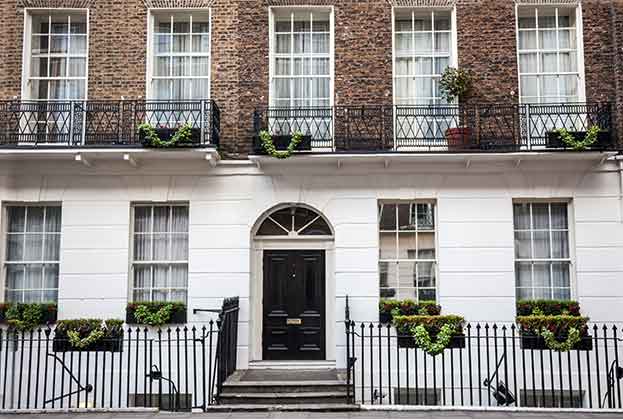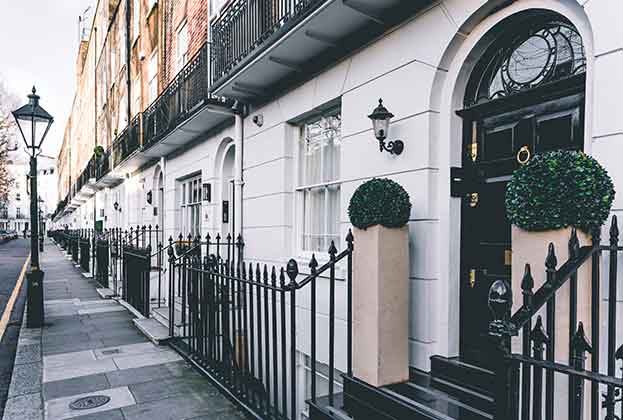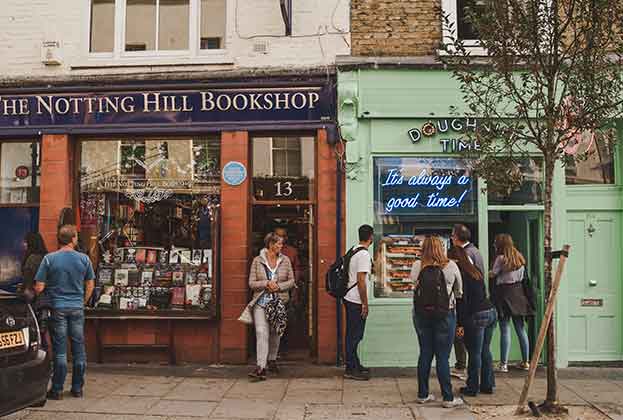Has London’s prime commuter zone reached its peak? Can London landlords expect an upturn in demand? Jessica Tomlinson answers your most pressing questions
How have rental values changed during the past year?
JT: From March 2020 to March 2021, rental values for prime property through the commuter zone have risen by 5.4%. This is the strongest annual rental growth for 10 years. A surge in demand from tenants looking for more space quickly depleted stock levels and pushed up values significantly.
It was more of a mixed picture in London, where prime rents fell by 5.5% over the 12 months to March 2021. A lack of overseas travel curtailed much of the international demand within prime London. Economic uncertainty paused some corporate relocations and few students returned to campus. These factors, combined with an influx of stock from both short-lets and new-build, saw rents fall across much of London. That said, family houses in the leafy areas of South West and West London did buck the trend with people’s renewed appreciation for more space and a private garden.
Are there signs of recovery in the London lettings market?
JT: The pace at which rents have fallen in London has eased. In part, this reflects the gradual reduction in surplus stock. The influx of properties both from the short-let and new-build markets during 2020 now look to be stabilising across much of London, but activity is also showing signs of an uptick. Levels of new applicants registering with Savills across the first quarter of this year remained strong across both London and the commuter belt. And in March, London recorded the highest number of new applicants so far in 2021. The number of viewings in the capital has also increased month on month over the first quarter of 2021. This activity suggests early signs that some tenants may be beginning to plan a return to the hustle and bustle of the city as people return to work and restrictions gradually ease.
What factors will decide the level of tenant interest in London?
JT: As much of the country enters a new era, the factors which impacted the market over the past year will also determine how the London rental market moves forward. These are the return of international travel, a revival in corporate relocations that may have previously been put on hold and a return in demand from young professionals, sharers, students and other tenants who may have questioned the buzz of the capital over the past year.
Where do you expect there to be most demand for the rest of the year?
JT: We still expect the circumstances created by the pandemic to shape the prime rental markets over the next six to nine months. As a result, the market looks to remain stronger for properties in the commuter belt and family homes in London over the short term.
When will we see rental growth return to prime London?
JT: The balance of supply and demand across prime London is likely to return as social distancing restrictions gradually ease and international travel resumes. We anticipate demand for smaller properties and those in central London to gradually normalise, which should underpin rental growth in the prime London markets from late 2021 onward, with more sustained recovery in 2022 as the effects from the pandemic dissipate.
Will the prime commuter zone continue to outperform London?
JT: We expect to see continued strong demand over the short term. However, as social distancing restrictions relax, this is likely to ease back, with less urgency to relocate. As such, we are forecasting more subdued levels of growth in the commuter zone throughout 2022.
For more information, please contact a Savills office in your area or arrange a market appraisal with one of our local experts.
Read the articles within Report: Prime UK Residential – spring/summer 2021 below
.jpg)




